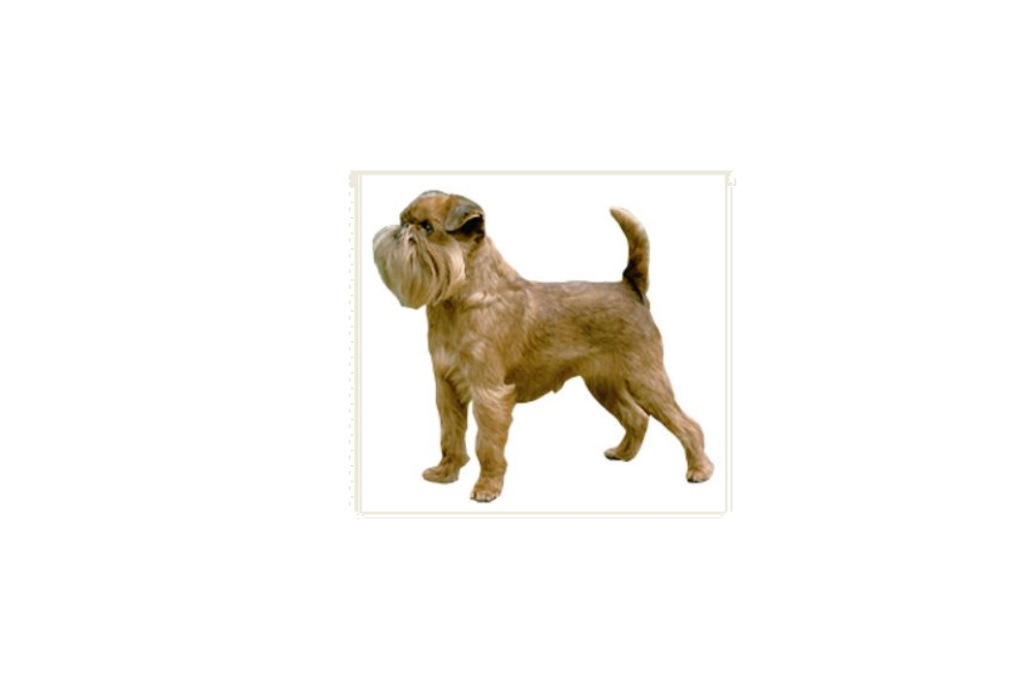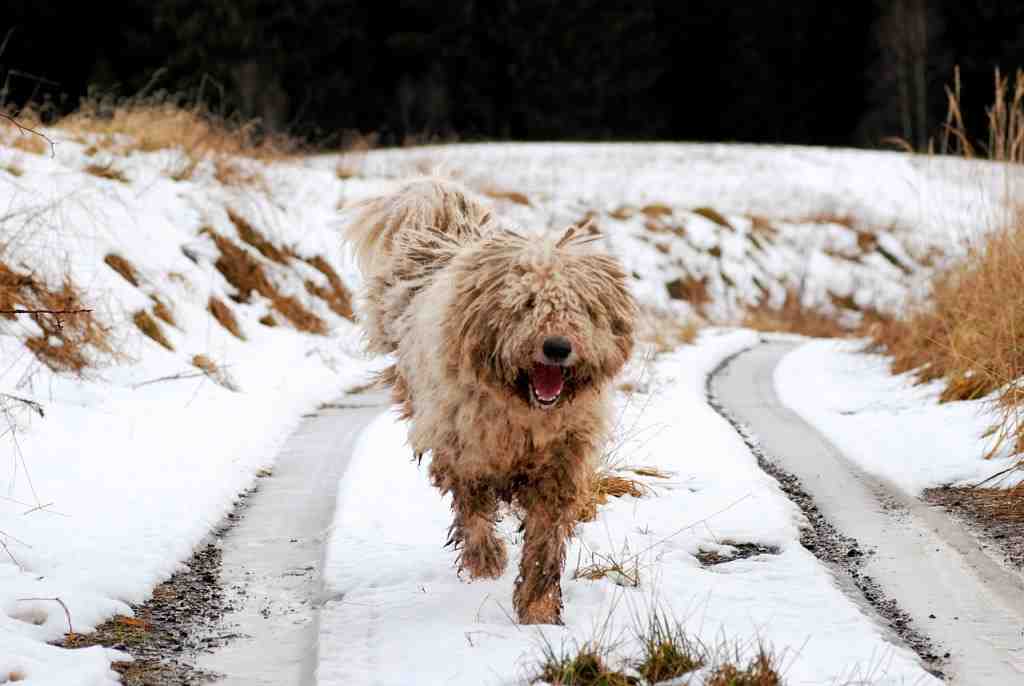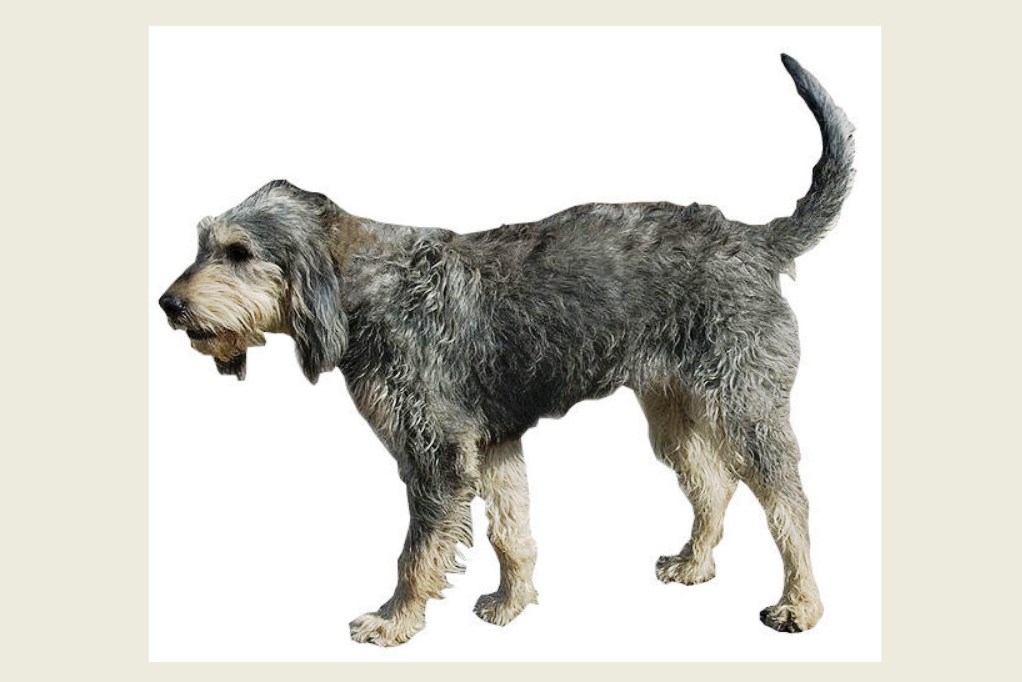The origin of the Brussels Griffon dog breed, as its name decrees, is Belgian. In the past, it was widespread not only in Belgium, but also in Holland and northern France, where, also thanks to Queen Marie-Enrichette of Belgium, who was a great admirer of this breed, they became popular as companion dogs. Initially, they were used to track down rodents in stables and as guards for carriages.
After its initial popularity, during the First Great War, this breed came to the brink of extinction; it was later recovered by the British.
Various hypotheses have been made about its origins; the most probable one is that this dog, together with the Belgian Griffon and the Little Brahmin, derives from a small, hard-coated dog, called smousje, that has always lived in the Brussels area. Then, in the 19th century, the contribution of the King Charles spaniel and the Pug, gave the black and short hair and fixed the current breed type. Other progenitors are indicated among the Yorkshires, affenpinschers, dwarf schnauzers. Crosses between the Belgian Griffon and the Pug also produced Brahmins and Griffons.
To this day, it is not very well known, few specimens can be found in the Netherlands and the United States. Due to its very small size, it is today considered a companion dog.
Character of the Brussels Griffon dog breed
The character of the Brussels Griffon has several facets; on the one hand, it is endowed with a rare spirit of independence, on the other hand, it is very affectionate and attaches itself very much to its owner, from whom it desires and almost demands the utmost attention. He wants to be at the centre, and does everything to make this happen. With the family he is loyal and affectionate, and although he is the classic house dog, he does not like handling very much, unless he asks for it himself, so he is not suitable for families with small children.
He is also very lively and curious, sensitive, confident and balanced. He is also very intelligent and is always alert. However, he needs an owner who does not give him too much rope, in fact he must be able to stand up to his proud and determined character and training from puppyhood is indispensable so as not to run the risk of finding an adult dog that is difficult to handle and always ready to take every opportunity to get what he wants.
It is a good guardian, courageous and a great barker, therefore very useful as a watchdog. He is also used to living in a flat, but his ideal would be to live in a house with a garden, as he loves the outdoors and needs to release his energy and satisfy his curiosity. With strangers, it may be wary and tolerates loneliness poorly. It is therefore not suitable for people who are away from home for most of the day. Left alone a lot, it can prove rather destructive in the home.
Appearance of the Brussels Griffon dog breed
The Brussels Griffon is a small, but compact and robust dog. It is distinguished from other Belgian Griffons by its hard, thick and shaggy coat, the colour of which is exclusively reddish, with sometimes only a little black on the head.
The size is not expressed at withers, but in weight, distinguishing two sizes: for the standard one it reaches 5 kilograms, for the small one 3 kilograms. The trunk is wide and deep and is attached to medium-length limbs, ending in short, rounded feet with black nails and pads. Its gait is regular and rhythmic. Its build is massive and strong, yet elegant and dynamic. The tail is curled and attached high.
The male measures between 20 and 28 centimetres, weighing between 3 and 6 kilograms. Between male and female there are no substantial differences in weight and height.
The head is broad, round with a convex forehead. The truffle is broad with wide, black nostrils and is positioned at eye level. The muzzle, which is rather short, is prognathous and is disproportionate in size to the body. The eyes are large, round, dark, protruding; its expression is bold, intelligent and very proud. The ears are small, set high and folded forward.
Very evident are the hairs on the muzzle that form a bushy beard and moustache.
The coat appears smooth, full-bodied and pleasant to the touch. The colour is reddish, almost entirely apart from the whiskers and longer tufts on the chin, which may be blackish.
Care and health of the Brussels Griffon dog breed
The Brussels Griffon is a hardy dog but may nevertheless develop certain hereditary diseases. It can suffer from coxofemoral dysplasia, respiratory obstruction syndrome, hydrocephalus, skin allergies, etc. In addition, his short muzzle causes him to tear frequently, so the fold of skin between his forehead and nose must be cleaned often to avoid inflammation. Its average life span is about 13 years, but it can easily reach 15 years and even exceed that.
Against the cold, its undercoat gives it a fair amount of protection, while it fears very hot temperatures, from which it must be protected.
As far as nutrition is concerned, its diet must be balanced and controlled as it can develop obesity, and in addition to its diet it must also take plenty of exercise.
Grooming is very simple, a regular weekly brushing is enough, however, it is also recommended to have a grooming by a professional a couple of times a year. Hair loss is moderate.


